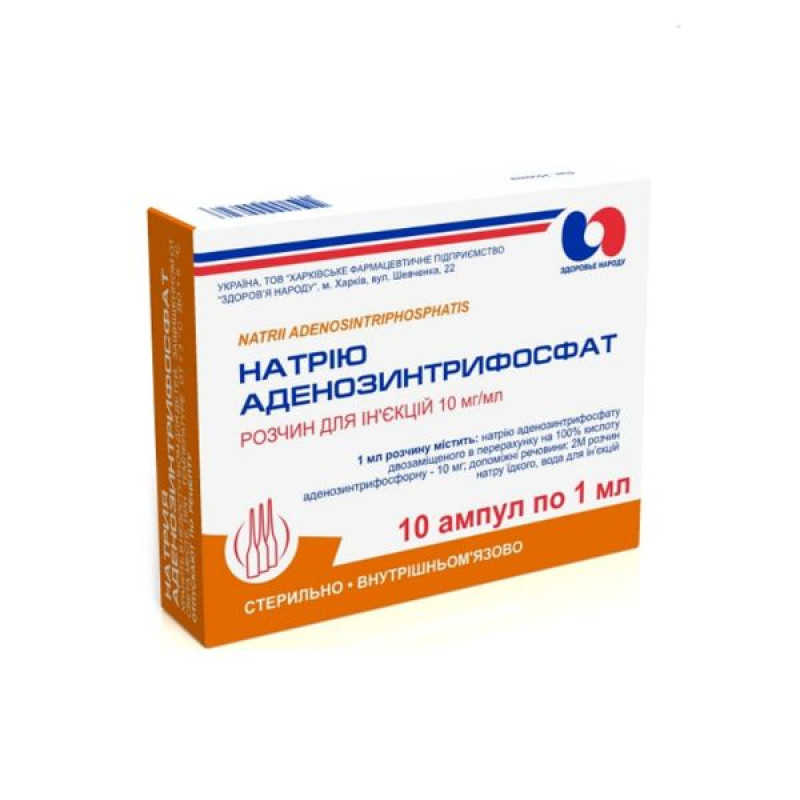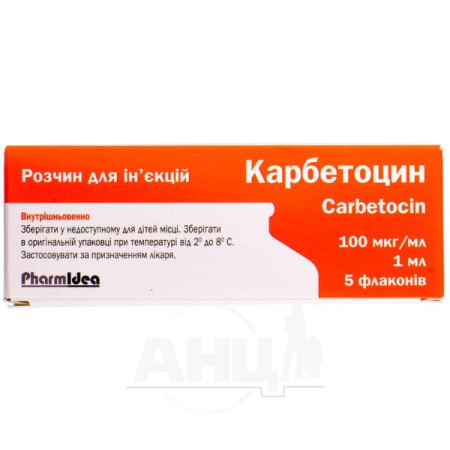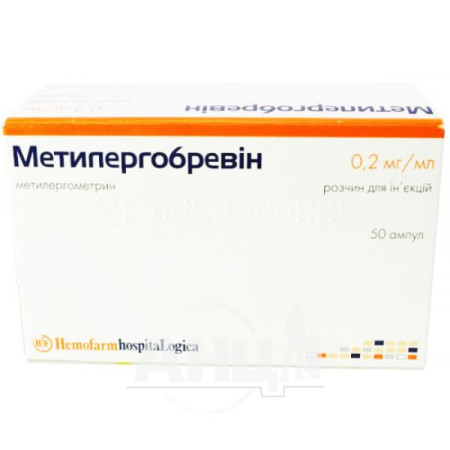Sodium adenosine triphosphate (ATP) solution for injection 10 mg/ml ampoule 1 ml No. 10

Sodium adenosine triphosphate is a cardiological drug. It is used in the complex therapy of muscular dystrophy and atrophy, for stopping paroxysms of supraventricular tachycardia, for spasms of peripheral vessels (Raynaud's disease, thromboangiitis obliterans). It is prescribed for peripheral, mixed and central forms of retinal pigment degeneration.
Warehouse
1 ml of solution contains adenosine-5'-triphosphoric acid disodium salt, calculated as 100% adenosine triphosphoric acid 10 mg; excipients: sodium hydroxide, water for injections.Contraindication
Hypersensitivity to any of the components of the drug.
Cardiogenic shock and other types of shock.
Decompensated stage of heart failure, QT prolongation syndrome, acute myocardial infarction, hemorrhagic stroke, severe forms of bradyarrhythmias, atrioventricular block of the II–III degree.
Arterial hypotension.
Hyperkalemia, hypermagnesemia.
Lung disease, chronic obstructive pulmonary disease (e.g., bronchial asthma).
Pregnancy or breastfeeding, childhood.
It should not be administered simultaneously with cardiac glycosides in large doses.
Method of application
Administer intramuscularly or intravenously.
For the treatment of muscular dystrophies, peripheral circulatory disorders, in the first 2–3 days, prescribe 1 ml once a day, in the following days - 1 ml twice a day or 2 ml once a day. The course of treatment is 30–40 days. If necessary, repeat the course of treatment with an interval of 1–2 months.
In hereditary pigmentary degeneration of the retina, administer intramuscularly 5 ml 2 times a day with an interval of 6–8 hours daily for 15 days. If necessary, courses can be repeated with an interval of 8–12 months. To stop supraventricular tachyarrhythmias, administer 1–2 ml intravenously for 5–10 seconds (the effect is observed after 20–40 seconds). If necessary, re-administer in the same dose after 2–3 minutes.
Application features
Intravenous administration of the drug should be carried out only in a hospital setting under medical supervision and with monitoring of heart function.
Intravenous administration of the drug should be carried out slowly, after which blood pressure should be measured.
Use with caution in severe bradycardia (except for severe forms of bradyarrhythmias), sick sinus syndrome, first-degree atrioventricular block, and a tendency to arterial hypotension.
Pregnant women
There are no data on the use of the drug during pregnancy or breastfeeding.
Children
There is no experience with the use of the drug in children, therefore the drug is contraindicated in this category of patients.
Drivers
During treatment, you should refrain from driving or working with other mechanisms that require increased attention.
Overdose
Symptoms: atrioventricular block of the II and III degrees, asystole, bronchospasm, the appearance of arrhythmias, ventricular disorders; sinus bradycardia and tachycardia; dizziness, arterial hypotension, short-term loss of consciousness. Allergic reactions are possible.
Side effects
From the side of the central nervous system: headache, dizziness, short-term loss of consciousness, feeling of compression in the head, phobias.
From the organs of vision: blurred vision.
On the part of the digestive tract: nausea, metallic taste in the mouth, increased motility of the digestive tract (with intravenous administration).
From the cardiovascular system: palpitations, chest discomfort, tachycardia or bradycardia, hypotension, AV conduction disturbances (atrioventricular block), arrhythmia, asystole.
Musculoskeletal system: pain in the arms, back, neck.
From the urinary system: increased diuresis.
Storage conditions
Store in the original packaging at a temperature of +2°C to +8°C.
Keep out of reach of children.
There are no reviews for this product.
There are no reviews for this product, be the first to leave your review.
No questions about this product, be the first and ask your question.



